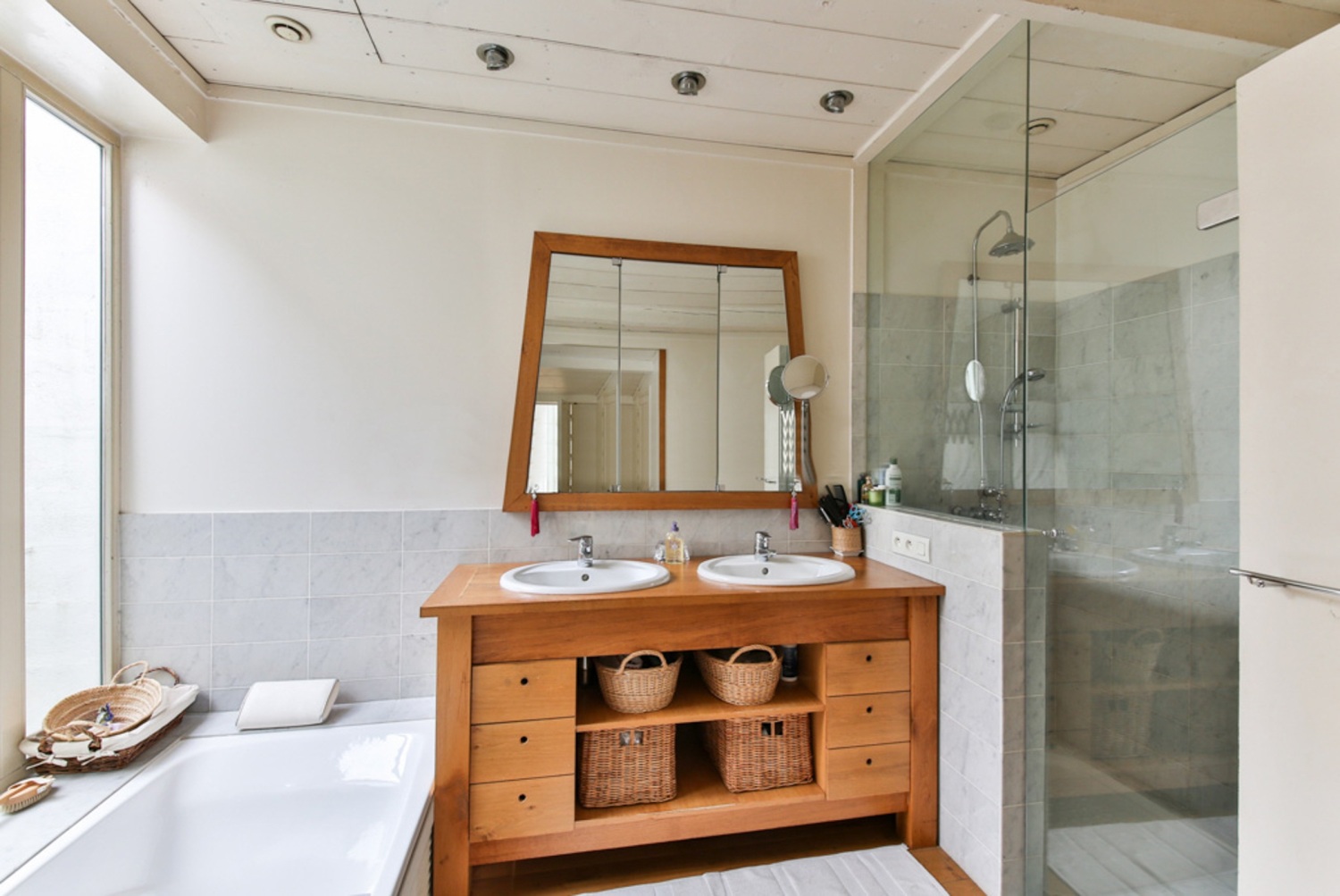One way to make sustainable living a bit less overwhelming is to focus on what you can do differently in each part of your home: the bathroom, the kitchen, the bedroom, the living areas and outdoor spaces.
An Eco-Friendly Bath
Making lists can help. Here’s a reasonable to-do list for the bathroom.
- Green your personal care. Independent scientific studies have found that many personal care products contain chemicals and other substances potentially harmful to us and the environment. The FDA has little power to regulate these products. The last time the agency passed a law regulating personal care products was in 1938…and it’s not terribly strong. To protect your health, you may want to gradually replace some of the personal care products you’ve been using. This can include soaps, shampoos, other hair-care products, moisturizers and other skin-care products, cosmetics, nail polish, toothpaste, mouthwash, shaving cream and deodorant. Depending on your personal care habits, your list be shorter…or longer. The good news: There are now plenty of alternatives made from raw materials that are clean and healthy (kind’ve what you’d expect from your personal care products). The Environmental Working Group’s Skin Deep Cosmetics Database (which covers much more than just cosmetics) lets you look up the products you own to 1) learn how they’ve been rated by EWG’s scientists and 2) find good alternatives.
- Be water efficient. Climate experts caution us that water shortages will likely be a constant threat in the not-too-distant future. If you live in California, you’ve seen this trend up close. But even if you live in an area where higher-than-average rainfall has been the norm for months upon months, being prepared for the flip side of that problem is just common sense. A good place to start is in the bathroom, where we typically use about 17 gallons to 20 gallons a day just on a nice, hot shower. There are several ways to conserve. We can take shorter showers (and take showers instead of baths, which use a lot more water) and consider flushing a bit less. When we’re ready to update the bathroom a bit, we can switch to water-efficient WaterSense faucets and showerheads and low-flush or dual-flush toilets. And we can learn about installing a grey-water irrigation system that recycles gently-used household water for gardening needs.
- Go organic. According to the EPA, non-organic cotton is grown with some of agriculture’s most toxic chemical “inputs,” threatening both the environment and the health of farm workers. Fortunately, organic cotton is becoming more widely available. Organic cotton bath towels, bath mats and washcloths can be purchased at major home decor stores as well as at shops specializing in green home products.
See, that’s not so difficult. Next up: the kitchen!
